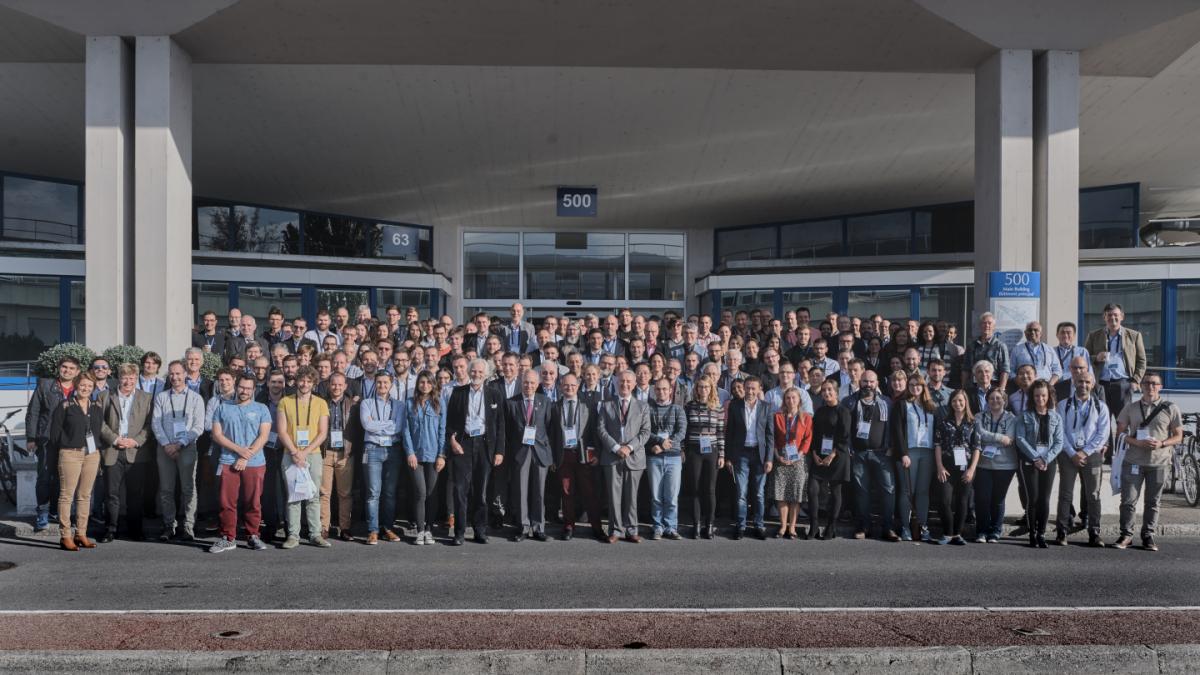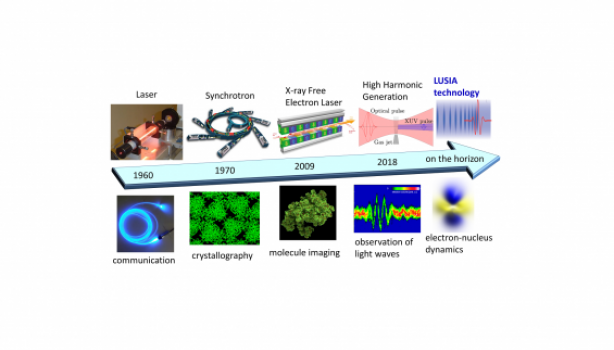HL-LHC civil engineering works at Point1, Meyrin, Switzerland. (Image: CERN)
Last October took place in Geneva the 8th HL-LHC Collaboration Meeting, the annual gathering of the project community to measure progress and to discuss the latest design and production objectives. A growing community, that has seen during this year the arrival of Triumf (Canada) and IHEP (China) and the increase of contribution from existent collaboration members such as PAEC (Pakistan), Uppsala University (Sweden) or the UK STFC and Universities contributing to HL-LHC.

Plenty of successful milestones were reached in 2018. This year saw the installation of the first crab cavities cryomodules in the SPS, the starting of the civil engineering works and the brilliant results of the fourth short model of the Nb3Sn quadrupole and of the seventh short model of the 11 T. Moreover,the long prototypes of the 11T dipole and the Nb3Sn quadrupole were tested and the first results don’t match those from the short models, thus demonstrating that the industrialization of magnets is a long path without shortcuts. The 8th annual meeting put together the key actors to analyse what worked and what any deviations from the original plan to ensure that the project is completed on time.
The 8th HL-LHC meeting brought more news for HL-LHC magnets. It gave the opportunity to discuss the advancement of the last tests of the second D1 model produced in KEK in Japan and the development of the corrector magnets at CERN and in Spain (CIEMAT), Italy (INFN) and China (IHEP), with several prototypes already tested.
Furthermore, there were many/ lessons learnt from the installation in the SPS of the test bench housing the DQW (double-quarter wave) crab cavities cryomodule. The construction of the associated infrastructure showed that the objective was reached only because all operations were studied and planned in detail. Without precise planning and a fully devoted team we wouldn’t meet the tight schedule. The cryomodule has showed an excellent behaviour and all data obtained has been discussed and will be used to improve the design of the LHC cavities.
There was also the occasion to discuss on the first results of the magnesium diboride superconducting link demonstrator (Demo 1) that contains the first 20 kA wires cabled in industry. Meanwhile, as this article is written. Demo 1 has been powered, though in a non-final configuration,with excellent croiygenic and electrical performance confirming the choice illustrated in the annual meeting that was focused to discuss the redesign of the Distribution feedboxes another key element of the cold powering.
The gathering was also the occasion to evaluate if new systems have to be added to the baseline. When discussing on the evolution of the LHC bean dumping system, (LBDS) it was decided the need of a technical review as today looks like a real need. Other options such as the electron lenses of the crystal collimation presented their latest results but will continue to be pursued with the expectation to find the necessary external funding as in-kind contribution
Several decisions were also presented such as the revamping of the existing cryogenic system that allows to avoid a new cryoplant in point 4 or the optimization of the matching sections and the new remote alignment system that will induce savings in the project while increasing avaibility in operation and reducing the dose to personnel.
There was also time to discuss the advancement of the warm powering and the latest news from the cold diodes that have shown to survive the the radiation test with HiLumi dose and the results on the shielded beam screen or the LS2 plans for the TANB and the shielding round the experiments.
Finally during a public visit, the HL-LHC collaborators sawthe progress on the civil engineering works, where in that moment the excavations had reached 30 metres at Point 1 and 25 metres at Point 5. The two 80-metre shafts should be fully excavated by the beginning of 2019.
Four days, some 180 presentations to push the technologies developed for the High-Luminosity LHC and beyond.


